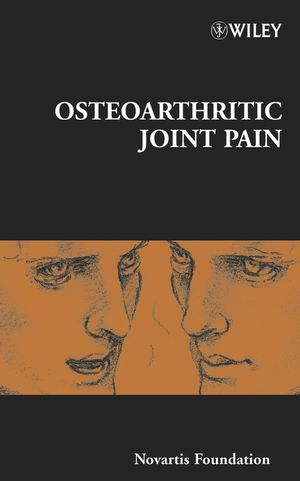Osteoarthritic Joint PainISBN: 978-0-470-86761-7
Hardcover
304 pages
June 2004
 |
||||||
Several mechanisms are thought to contribute to osteoarthritic joint pain. These include mild synovial inflammation, bone oedema, ligament stretching, osteophyte formation and cartilage-derived mediators. Changes in joint biomechanics and muscle strength also influence the severity and duration of joint pain in osteoarthritis. Within the nervous system, the relative contributions of peripheral afferent nociceptive fibres and central mechanisms remain to be defined, and there is limited information on the phenotype of sensory neurons in the OA joint. Importantly, there is no relation between clinical severity, as measured by radiographic changes, and the presence and severity of joint pain. Patients with severe joint pain may have normal joint architecture as determined by X-ray, whereas patients with considerable evidence of joint remodelling may not have significant joint pain. Treatments for osteoarthritic joint pain include non-steroidal anti-inflammatory compounds, exercise, corrective shoes and surgical intervention. There remains a critical need for improved control of joint pain in osteoarthritis.
This book brings together contributions from key investigators
in the area of osteoarthritic joint pain. It covers the
clinical presentation of joint pain, the pathways involved in joint
pain, osteoarthritis disease processes and pain, experimental
models and pain control. The discussions provide insights into
the nature of osteoarthritic joint pain, identify key studies
needed to advance understanding of the problem, highlight possible
intervention points and indicate future pathways towards a better
treatment of osteoarthritic joint pain.



